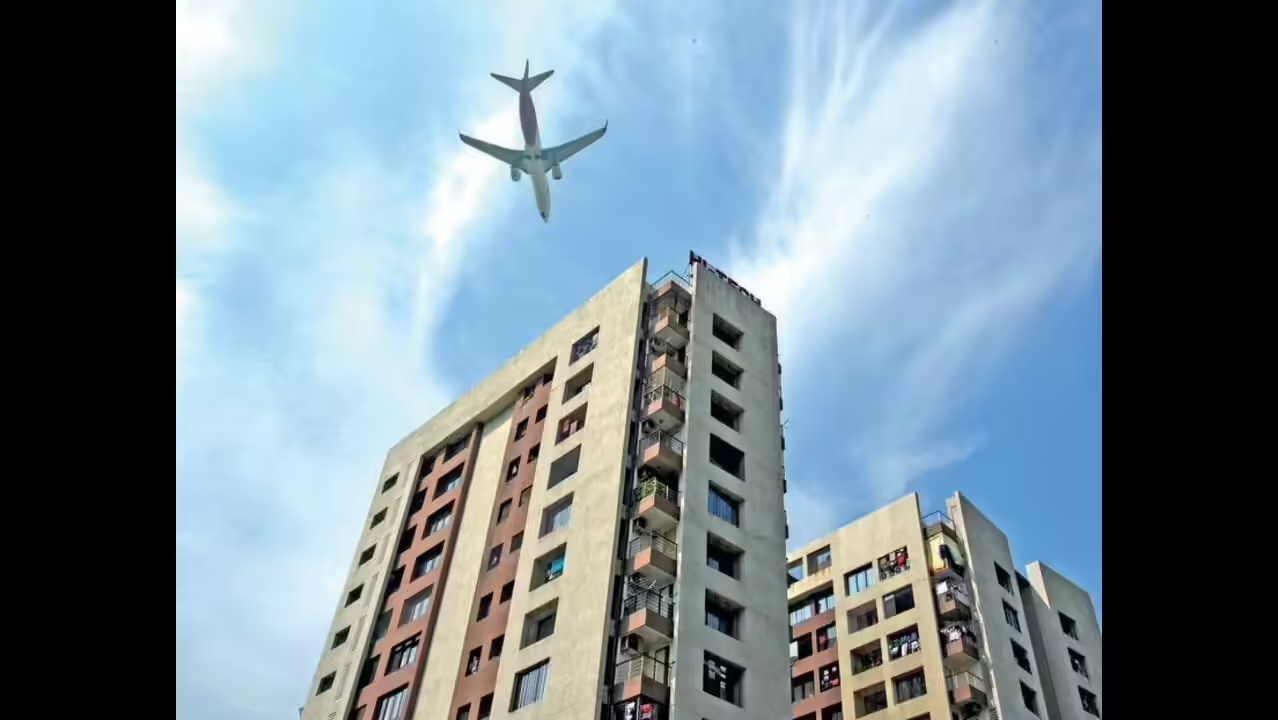A grave warning has been issued regarding significant safety violations near Surat Airport, including the presence of illegal high-rise tower cranes and a pervasive lack of mandatory anti-collision lights on surrounding buildings. These infractions, detailed in a scathing letter to the Airports Authority of India (AAI) chairman, pose an immediate and severe threat to aircraft operations, particularly during critical take-off and landing phases, thereby jeopardising passenger safety and the long-term sustainability of the region’s air connectivity.
The alarm was raised by a prominent airport safety advocate, highlighting persistent violations of the Aircraft Act, 1994, which mandates strict adherence to height restrictions and lighting requirements around airfields. The activist underscored that these breaches create perilous conditions for aircraft, especially during early morning hours when Surat frequently experiences fog and low visibility. This oversight is not merely a procedural lapse; it represents a direct challenge to the safety framework essential for an operational airport in a rapidly developing urban centre. A critical concern is the widespread failure of buildings near the airport to install anti-collision lights, a fundamental safety requirement. Many structures, despite reaching their permissible height limits as per local regulations and No Objection Certificates (NOCs) issued by the AAI, remain unlit. This negligence means that from sunset to sunrise, high points around the airport remain obscured, rendering them invisible to pilots and dramatically increasing the risk of collision.
Such a glaring disregard for aviation safety protocols raises serious questions about enforcement mechanisms and the collective commitment to passenger welfare. Equally alarming is the unmonitored proliferation of tower cranes on various construction sites. These temporary structures frequently exceed the permissible height limits stipulated in their NOCs, intruding into the aircraft’s designated glide path. Unlike permanent buildings, cranes are dynamic obstacles, their heights capable of varying, and their positions subject to change. This inherent instability, coupled with a lack of consistent monitoring and the absence of warning lights, transforms them into volatile hazards, creating a “disaster waiting to happen” scenario that places hundreds of lives at risk with every flight. The issue transcends mere regulatory non-compliance; it reflects a broader challenge in urban planning and development oversight. Rapid urbanisation often brings with it unchecked construction, where short-term economic gains might inadvertently compromise critical public infrastructure and safety standards.
The situation around Surat Airport exemplifies how uncoordinated development can undermine the principles of a sustainable and equitable city, where the well-being of its inhabitants and the security of its transportation networks should be paramount. Effective aviation safety is crucial for maintaining efficient air travel, which in turn contributes to reduced carbon emissions by optimising flight paths and operational efficiency. The letter urged immediate corrective measures from both the Surat Municipal Corporation (SMC) and local developers. These include an urgent reduction in crane heights to permissible levels and ensuring that all structures, whether permanent or temporary, are duly equipped with functional anti-collision lights. The demand for prompt action underscores the urgency, emphasising that delaying intervention until after a catastrophic incident occurs is an unacceptable approach. The reputation of Surat Airport, a vital economic gateway, alongside the safety of its passengers, hangs in the balance.
The ongoing challenges at Surat Airport highlight the imperative for robust inter-agency coordination, stringent enforcement of aviation safety regulations, and a renewed commitment to integrated urban planning that prioritises public safety and environmental sustainability. For Surat to continue its trajectory as a leading economic hub, it must proactively address these critical safety deficits, ensuring that its infrastructure development aligns with national aviation standards and contributes to a secure, resilient, and truly equitable urban future for all citizens.
Also Read :Dehradun Conducts Full‑Scale Mock Crash Drill at Doon Airport to Test Readiness




